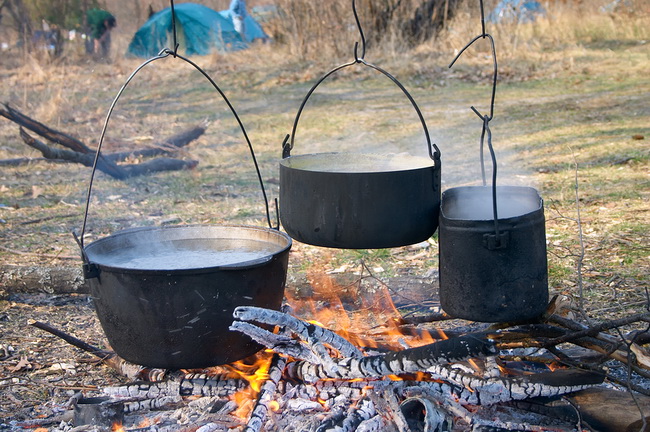- Make It Yourself Lavender Heart-Shaped Bath Bombs!
- 20 Things You Never Knew About “Down There”
- 12 Best Foods For Those Suffering From Arthritis Pain
- 12 Personal Hygiene Mistakes Almost Everyone Makes (Mom Never Told You About #4!)
- 15 Medicinal Plants And Herbs From The Cherokee People
- 12 Mind-Blowing Benefits Of Drinking Coconut Water During Pregnancy
- 12 Outstanding Winter Foods That Won’t Fatten You Up Like A Christmas Turkey
Emergency Water Purification Methods: Have Clean Water in 1 Minute!

Photo credit: bigstock.com
3. Boiling
This is perhaps the best method, as rapidly boiling the water for 1 minute (3 minutes if you are at an elevation of more than 5,000 feet) will kill viruses, bacteria, and protozoa. You will use less fuel if you put a lid on the pot. This will also keep contaminants from falling into the water. Wait until the water is really boiling, then allow it to continue to boil for one full minute. Once the water has cooled sufficiently, transfer the water from the pot to another container with a lid.
4. Purification Tablets
If you have planned ahead, you can keep some of these inexpensive purification tablets on hand. Generally, you simply drop one tablet into a quart of water, and then wait 4 hours for it to do is job. This is a simple and fairly inexpensive way to purify water, if you have thought ahead and have these on hand, that is! Most tablets will cost you about 50 cents to purify one quart of water.
SEE ALSO: Cilantro Removes Heavy Metals from Tap Water
5. Sunlight
In the worst circumstances, plain sunlight can also be used to purify water. Whether it will kill everything in the water depends on exactly what is in the water, but in the worst case scenario, sunlight filtered water is better than nothing.
After cleaning the water, place it in clear plastic or glass containers and seal them so that no other contaminants can enter. Containers with tight fitting lids are best, if you can find them. Place the containers with water in direct sunlight for a minimum of 6 hours or more, if you can. Sunlight will heat the water enough to kill many of the germs and the UV rays should kill almost everything else. Again, this isn’t a 100 percent fool proof method, such as boiling, but in a pinch it is far better to use water that has been exposed to sunlight than to drink questionable water.
Remember that in an emergency, even if you still have running tap water that does not mean it cannot become contaminated. If you have any doubt whatsoever, use one of the methods above.
References:































